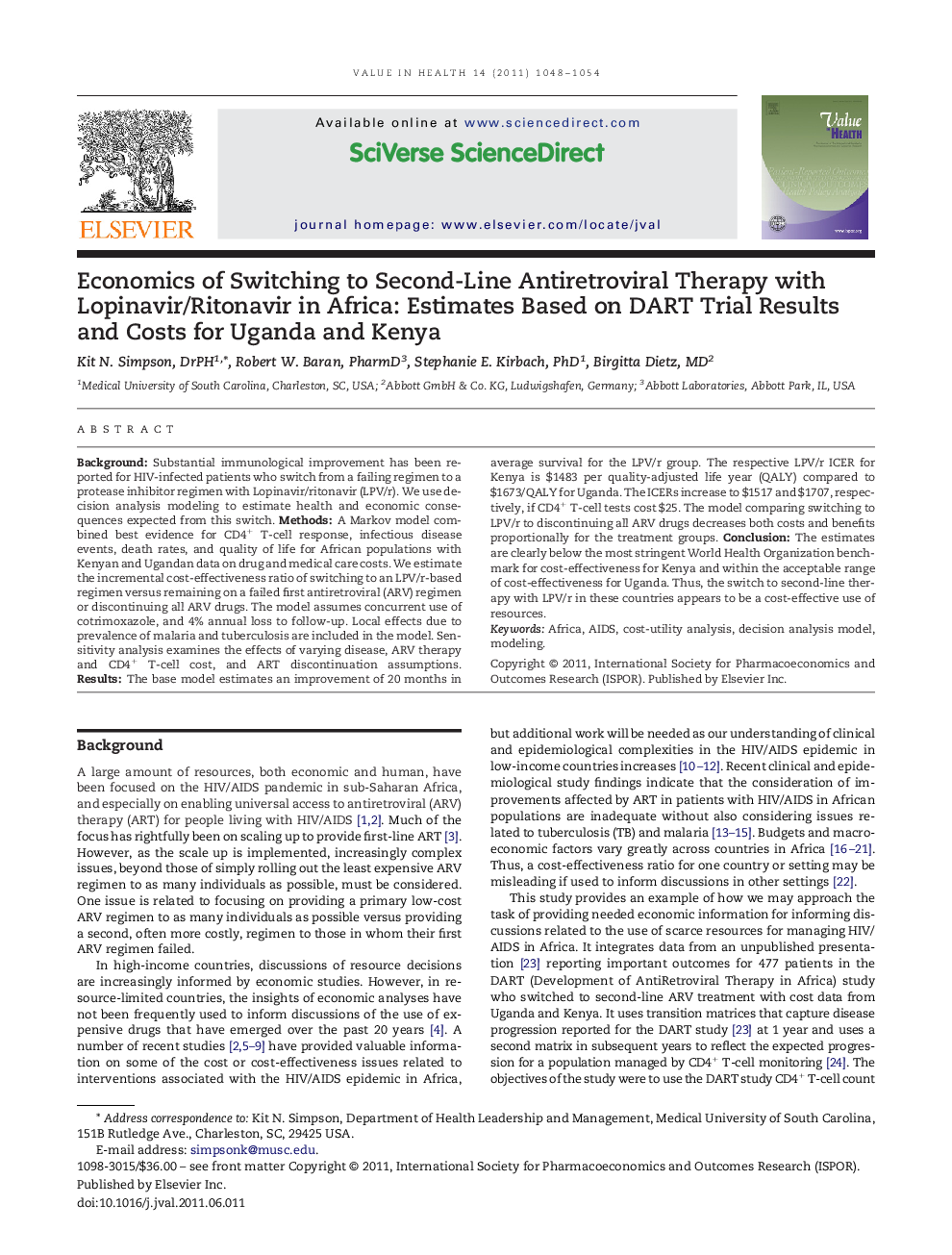| Article ID | Journal | Published Year | Pages | File Type |
|---|---|---|---|---|
| 991208 | Value in Health | 2011 | 7 Pages |
BackgroundSubstantial immunological improvement has been reported for HIV-infected patients who switch from a failing regimen to a protease inhibitor regimen with Lopinavir/ritonavir (LPV/r). We use decision analysis modeling to estimate health and economic consequences expected from this switch.MethodsA Markov model combined best evidence for CD4+ T-cell response, infectious disease events, death rates, and quality of life for African populations with Kenyan and Ugandan data on drug and medical care costs. We estimate the incremental cost-effectiveness ratio of switching to an LPV/r-based regimen versus remaining on a failed first antiretroviral (ARV) regimen or discontinuing all ARV drugs. The model assumes concurrent use of cotrimoxazole, and 4% annual loss to follow-up. Local effects due to prevalence of malaria and tuberculosis are included in the model. Sensitivity analysis examines the effects of varying disease, ARV therapy and CD4+ T-cell cost, and ART discontinuation assumptions.ResultsThe base model estimates an improvement of 20 months in average survival for the LPV/r group. The respective LPV/r ICER for Kenya is $1483 per quality-adjusted life year (QALY) compared to $1673/QALY for Uganda. The ICERs increase to $1517 and $1707, respectively, if CD4+ T-cell tests cost $25. The model comparing switching to LPV/r to discontinuing all ARV drugs decreases both costs and benefits proportionally for the treatment groups.ConclusionThe estimates are clearly below the most stringent World Health Organization benchmark for cost-effectiveness for Kenya and within the acceptable range of cost-effectiveness for Uganda. Thus, the switch to second-line therapy with LPV/r in these countries appears to be a cost-effective use of resources.
